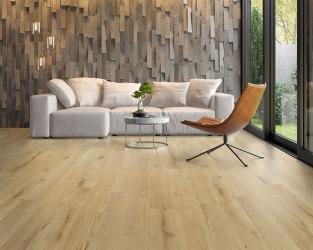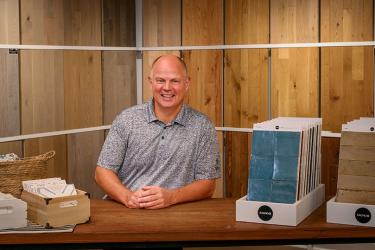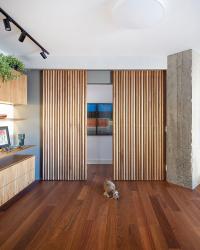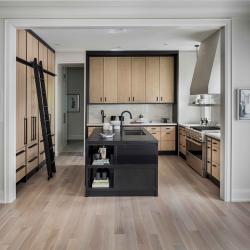From the Start
When starting a flooring renovation, a client should evaluate the traffic level of their home. Do they have a lot of traffic with kids and pets? Or, do they have low traffic with lower activity? These types of questions help our staff determine which type of floor, grain and texture is most suitable for their specific situation. Both color and grain will greatly impact the overall aesthetics of the area. Lighter tones tend to open spaces and lend themselves to a casual, neutral palette while darker tones create a warmer, cozier feel.
Endless Opportunities
Boardwalk carries a wide variety of both unfinished and factory finished hardwood floors. We have manufacturers that make simple products like 2 ¼” unfinished strips or we can have custom products made in solid, engineered, wide plank or reclaimed in-factory finished or unfinished. If a client can dream it, we have the resources to get it manufactured.
Finished vs Unfinished
Finished flooring is finished in the factory and then installed in the home or commercial space. Unfinished flooring is installed as raw wood and then sanded and finished in the space. The best comparison would be purchasing your car. Would you rather buy an unpainted car and have it painted in your garage or have it painted at the factory in a controlled environment? A controlled environment uses finishes with a higher solids content and it eliminates the potential of dust, dirt or even hair setting in the finish, which happens often on site finished floors.
Knowing the Tone
Currently, we are seeing color palettes move from medium/dark colors to lighter, more neutral color tones. Lighter tones tend to make spaces look larger and don’t show dirt as much. We are also seeing some projects introduce patterns such as herringbone, chevron or mixed media, a blend of wood and tile, to specific areas of the home like entries, foyers or dining areas.
Sticking to Tradition
Traditional hardwood or solid hardwood flooring is still a staple in the industry. Solid hardwood has been used in homes for hundreds of years and to this day still performs. It adds value to the home and is the most sought after feature for home buyers when looking for a new home. Other look-alike products come and go, such as laminate, vinyl and wood tile, but nothing replicates the beauty of a real, solid hardwood floor.
Tips and Tricks
When installing your own hardwood floors, buy a good quality product! Low-end, inexpensive hardwood floors can be a nightmare to install while spending a little more can dramatically improve the quality of the material and make installation easier. Boardwalk caters to the DIY market, we rent tools for installation and our staff is knowledgeable in the installation process.
Keeping It Clean
Once installed, the best way to clean a hardwood floor is to sweep or vacuum to remove loose dirt and grit and clean the floor with a neutral floor cleaner such as Bona Kemi. Stay away from steam cleaners or machines that spray water on the floor and scrub. These methods will start to deteriorate the materials and actually cause the floor to look dirtier by driving dirt into the grain of the wood.
Reclaim and Renew
For homeowners looking for reclaimed products, Boardwalk carries a wide range including flooring, barn siding or even reclaimed beams for fireplace mantels or decorative beams. The reclaimed products we carry are authentic products pulled from old barns or factories and repurposed into building materials, truly unique and one-of-a-kind.













